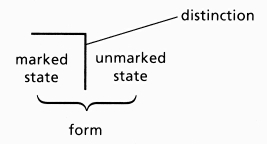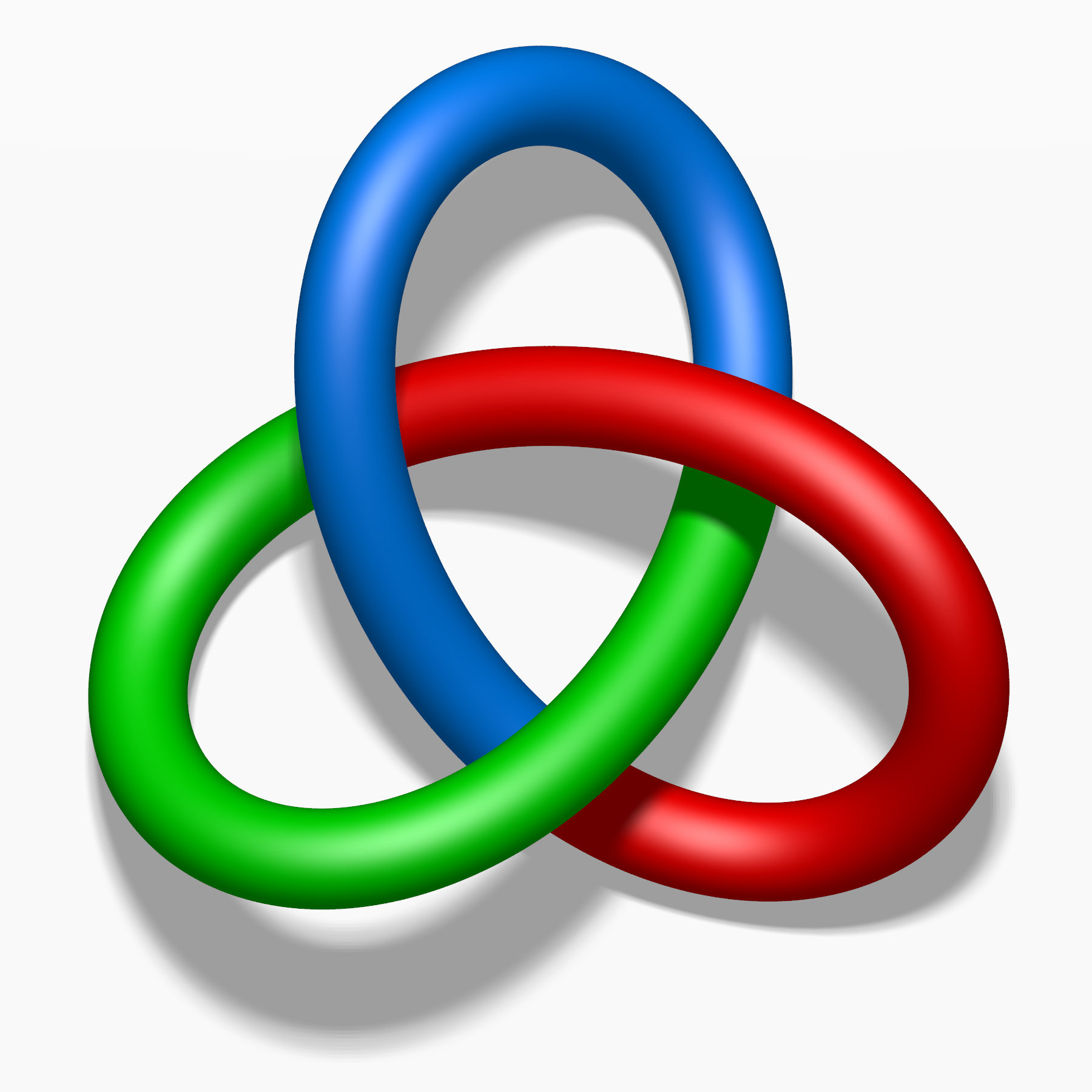I am an educational technologist. What does that mean?
I think we are at a key moment in the history of technology in education and there is a radical choice facing us.
We can either:
To do the latter, we need to think about what our discipline really is. I am going to argue that our discipline is one that crosses boundaries: it is the discipline of study into how distinctions are made, and what they do.
For many academics, the educational technologist looks after the VLE or does cool videos on MOOCs. They also the person academics seek help from when the techno-administrative burden of modern universities becomes overwhelming: how do I submit my marks, get my students on this course, etc. For some academics, the educational technologist is a kind of secretary - the equivalent of the secretary who would have done the academic's typing in the 1970s when typing was not considered to be an academic activity. Some academics blame the educational technologist for the overwhelming techno-administrative nightmare that constitutes so much of academic life today.
Certainly there is a boundary between the academy and the educational technologist. Like all boundaries, it has two sides. On the one hand, the academy pushes back on the technologists: it generally treats them with suspicion (if not disdain) - partly because it (rightly) sees a threat to its current practices in the technology. The educational technologists have tried to push back on the academy to get it to change, embrace open practice, realise the potential of the technology, etc. Right now, the academy is winning and educational technologists are rather despondent, reduced to producing "learning content" in packages like "storyline" which often reproduce work which already exists on YouTube.
This situation has partly arisen because of a lack of identity among learning technologists. In trying to ape the academy, they established themselves in groups like ALT or AACE as a "discipline". What discipline? What do they read? In reality, there is not much reading going on. There is quite a lot of writing and citing... but (I'll upset a few people here) most of this stuff is unreadable and confused (I include my own papers in this). In the defence of the educational technologist, this is partly because what they are really trying to talk about is so very difficult.
I believe we should admit our confusion and start from there. Then we realise that what we are doing is making distinctions. We make distinctions about learning like this:
or we might make cybernetic distinctions like this:
For Bohm, dialogue is a way to exploring the different distinctions we make. The demand of Bohmian scientific dialogue is to continually recalibrate distinctions in the light of the distinctions of others. More importantly, it is to embrace uncertainty as the operating scientific principle.
Scientific Dialogue is about communicating uncertainty.
If we are recalibrating, then we are continually drawing and redrawing our boundaries. But this process is controlled by more fundamental organising principles which underlie the processes of a viable organism. It's perhaps a bit like this:
I think we are at a key moment in the history of technology in education and there is a radical choice facing us.
We can either:
- Use technology to uphold and reinforce the traditional distinctions of the institution. This means VLEs, MOOCs, Turnitin, etc. This enslaves individual brains and isolates them;
The consequences of this are well summarised by Ivan Illich:
"Observations of the sickening effect of programmed environments show that people in them become indolent, impotent, narcissistic and apolitical. The political process breaks down, because people cease to be able to govern themselves; they demand to be managed."The alternative?
- We use technology to organise multiple human brains in institutions and outside them so that many brains think as one brain.
To do the latter, we need to think about what our discipline really is. I am going to argue that our discipline is one that crosses boundaries: it is the discipline of study into how distinctions are made, and what they do.
For many academics, the educational technologist looks after the VLE or does cool videos on MOOCs. They also the person academics seek help from when the techno-administrative burden of modern universities becomes overwhelming: how do I submit my marks, get my students on this course, etc. For some academics, the educational technologist is a kind of secretary - the equivalent of the secretary who would have done the academic's typing in the 1970s when typing was not considered to be an academic activity. Some academics blame the educational technologist for the overwhelming techno-administrative nightmare that constitutes so much of academic life today.
Certainly there is a boundary between the academy and the educational technologist. Like all boundaries, it has two sides. On the one hand, the academy pushes back on the technologists: it generally treats them with suspicion (if not disdain) - partly because it (rightly) sees a threat to its current practices in the technology. The educational technologists have tried to push back on the academy to get it to change, embrace open practice, realise the potential of the technology, etc. Right now, the academy is winning and educational technologists are rather despondent, reduced to producing "learning content" in packages like "storyline" which often reproduce work which already exists on YouTube.
This situation has partly arisen because of a lack of identity among learning technologists. In trying to ape the academy, they established themselves in groups like ALT or AACE as a "discipline". What discipline? What do they read? In reality, there is not much reading going on. There is quite a lot of writing and citing... but (I'll upset a few people here) most of this stuff is unreadable and confused (I include my own papers in this). In the defence of the educational technologist, this is partly because what they are really trying to talk about is so very difficult.
I believe we should admit our confusion and start from there. Then we realise that what we are doing is making distinctions. We make distinctions about learning like this:
What is this? There are lines and boxes (or circles).
What are the lines and boxes doing?
What are the lines around the boxes doing? (these are the most interesting)
Scientific communication is about coordinating distinctions. In coordinating distinctions, we also coordinate expectations. The academy, in its various disciplines, upholds its distinctions. However, as physicist David Bohm realised, scientists don't really communicate.
For Bohm, dialogue is a way to exploring the different distinctions we make. The demand of Bohmian scientific dialogue is to continually recalibrate distinctions in the light of the distinctions of others. More importantly, it is to embrace uncertainty as the operating scientific principle.
Scientific Dialogue is about communicating uncertainty.
If we are recalibrating, then we are continually drawing and redrawing our boundaries. But this process is controlled by more fundamental organising principles which underlie the processes of a viable organism. It's perhaps a bit like this:
Here we see the death of boundaries, and the reorganisation of the organism. Much of what goes on here remains a mystery to biologists. Some are exploring the frontiers, however. Deep down, it seems to be about information...
or ecology:
Information, semiotics, ecology all concern the making of distinctions. There are a variety of mathematical approaches which underpin this. In fact, Charles Peirce, founder of semiotics, was also the founder of a mathematical approach to studying distinctions. This is Peirce's attempts to fathom out a logic of distinctions:
And this is the very closely-related work of Cybernetician George Spencer-Brown:
When we talk about education, or technology, or biology... or anything... we are making distinctions.
A distinction has an inside and an outside. We usually forget the outside because we want to communicate the inside. We only know the outside of the distinction by listening.
It is the same in physics - particularly Quantum physics.
And this is becoming important for the future of computing. Quantum computers are programmed using a kind of "musical score" - like this from the IBM Quantum Experience computer:
Well, it means that science has to embrace uncertainty as an operating principle. Yet science in the academy is still tied to traditional ways of communicating. The academic paper does not communicate uncertainty.
To communicate uncertainty, we need to listen to the outside of our distinctions.
Our scientific institutions need to reconfigure their practices so that the distinction between education and society is realigned to progress society's scientific knowledge.
It is not to say that distinction between education and society should be removed. But that a discipline of examining ecologies of distinctions is essential for a new science of uncertainty to prosper.
It also means that new media should be deployed to communicate uncertainty and understanding on a much wider basis than can be achieved with academic papers. Where we have struggled is in being able to listen to large numbers of people in a coherent way.
This is one way in which we might do this...
It involves doctors and learners using Adaptive Comparative Judgement tools as a means of making diagnoses of retinal scans in examining Diabetic Retinopathy. Adaptive Comparative Judgement is a technique of getting lots of people to make simple comparisons in order to arrive at a ranking of those scans, with the most pathological at one end, and the normal at the other. In addition to this, there is a simple way in which learners can be trained to do this themselves:
Other technological means of getting many brains to act as one brain include BitCoin and the BlockChain that sits behind it...
The MIT Digital Certificates project is exploring ways in which a blockchain might decentralise education...
What about the distinctions between education and society? How might they be better managed?
What about the distinctions between critique and functionalism and phenomenology in education?
Well, the critique only exists because it has something to push against. The thing it pushed against exists partly because of the existence of the critique (and indeed, it embraces the critique!)... We have a knot.
We should understand how it works....








No comments:
Post a Comment